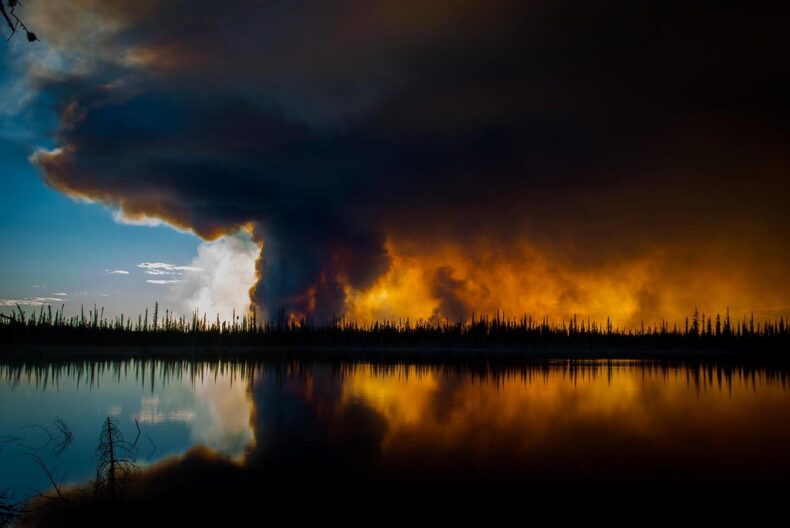
On July 30th, 2014, the sky turned black in the middle of the day and a thunderstorm rained tar on our car. That was the final straw of the Yellowknife wildfire season for me; I brought my then-4-year-old son down to Calgary to attend a day camp until the air cleared up North. Back then, Beijing’s air quality was so nightmarish that I was shocked we had the same particulates index reading. Now a decade later, Beijing’s skies are blue and healthy but Yellowknife is still a 20,000-person outpost in the middle of a semi-arid (very flammable) taiga that sprawls over an area twice the size of France.
At the end of that fire season in 2014 I attended a meeting where officials laid out emergency plans for future fire seasons that could get worse. Yellowknife has only one highway out of town. If fire crosses the highway and heads toward the town, we’re in trouble, they said. It would not be feasible to fly everyone out, they said, and the most extreme plan at their disposal was to order everyone to shelter in place as the fire passed over. Privately-owned construction equipment on the edge of town could be commandeered by the city, they added. I tried to imagine ‘sheltering in place’ in my beloved stick-built house with its solid diagonal beams supporting wooden decks.
Just as COVID quickly surpassed the most extreme public health plans that governments had dared dream of, this summer’s wildfire season in the North taught us that yes, sometimes you really do need to just get everyone out of town, even if it is infeasible. Multiple fires were approaching, and they looked determined to pass right through town until they reached Great Slave Lake. Yellowknife has never before had to evacuate out of the Northwest Territories, but the time had come for a group road trip.
The 1,500 kilometer drive to the next major city, Edmonton, has one stretch of 335 kilometers without a gas station. At one end of that stretch is the hamlet of Enterprise (population 75) and its service station, but that community had already been destroyed by fire a week earlier, so the evacuees needed to be supplied on the roadside by people driving petrol up from the South. The global press found the story charismatic and all of a sudden government press conferences were inundated with people from the New York Times and The Guardian, swamping out the local outlets who were there to convey instructions to their constituent evacuees.
While the townspeople settled in for a stay in Alberta, bunking down with friends and relatives or lodging at hotels, a brave few stayed behind to try to save the city from the approaching flames. Twenty normally-competing contracting companies laid down their swords and removed their construction gear out of all the diamond mines, which had issued a stop work order before the evacuation. There was no time to order anything new – it was just a matter of grabbing whatever was in inventory and getting to work.
“With 13 excavators, multiple contractors cleared 40 acres of forest in 6 hours.” I find that to be quite the sentence, and it describes an effort that would have taken months to plan and orchestrate if only there had been months to work with. As it was, they just got on with it, clearing wide swaths around the perimeter of the city so the fire would arrive at the outskirts only to find it had nothing to burn. They also set up tens of kilometers of pipeline to convey water to the water cannons positioned at intervals along the firebreak to soak the trees that remained.
There was no time for the city’s garbage to be picked up either: Soon after everyone left town, 8 bears sauntered in, driven into town by the fires but kept there by the ample food lying around in driveway trash boxes.
But it worked. Through a combination of water bombing and backburning efforts and the cooperation of weather patterns, the fires just outside Yellowknife were finally declared under control. You can’t just bring 20,000 people back into town without first letting grocery stores stock up and municipal services start running, but Yellowknifers have been told that this Wednesday, they are invited back to their homes. Homes that, against some scary odds, are very much still standing.
Image: Kyle Thomas “This photo was taken on June 26th, 80km north of Fort Providence about 10kms off Highway 3 at about 8pm at night.”